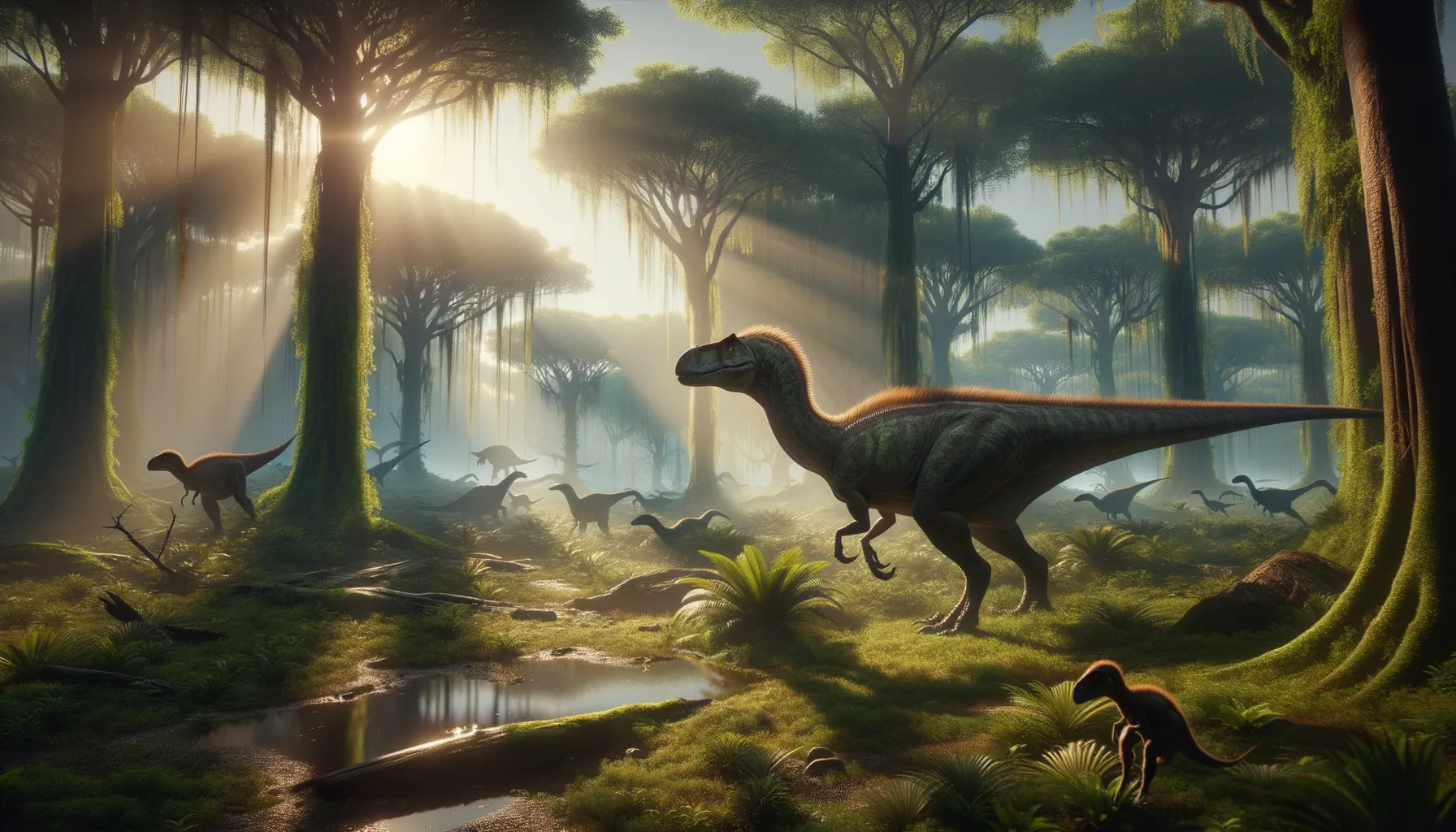
Syntarsus
Agile predator of the Jurassic age!
Period
Jurassic
Length
Measured around 3 meters in length.
Height
Stood about 1 meter tall at the hips.
Weight
Approximately 20-30 kilograms.
Syntarsus was a small theropod dinosaur that roamed the Earth during the Jurassic period. Noted for its slender build and agility, it once inhabited parts of what are today Africa and North America. Its discovery has provided significant insights into early theropod evolution and behavior. Often bustling with activity, this dinosaur was recognized for its active hunting strategies and social interactions within its community.
Diet
Syntarsus was a carnivorous dinosaur, primarily feeding on small animals. It likely hunted insects, small vertebrates, and possibly scavenged remains from larger predators' kills. Its sharp teeth and agile frame aided in capturing prey efficiently.
Hunting
It hunted using its speed and agility to surprise prey. Syntarsus was likely a solitary hunter when stalking small vertebrates but may have used pack strategies for larger or faster prey. Its keen senses played a vital role in tracking and capturing food.
Environmental challenges
Syntarsus lived in a dynamic environment that required it to be adaptable. Competition for resources with other carnivores meant it had to be opportunistic in its feeding habits. It also faced challenges from fluctuating climates during the Jurassic period. The need to conserve water and energy during dry spells would have been a significant survival factor.
Speed
Medium; estimated around 30-40 km/h.
Lifespan
Roughly 15-20 years.
First discovery
First discovered in Zimbabwe in 1963.
Fun Facts
- Syntarsus was a small, meat-eating dinosaur that lived about 200 million years ago during the early Jurassic period.
- Despite its smaller size, Syntarsus is thought to have been a swift runner, possibly using its speed to catch prey or escape predators.
- The name 'Syntarsus' means 'fused ankle' because its ankle bones were joined together for stability, which likely assisted in its running abilities.
- Syntarsus fossils have primarily been found in southern Africa and in the southwestern United States, indicating it had a fairly wide habitat range.
- This dinosaur had long, slender legs and a light build, similar to that of modern-day birds, suggesting it needed to be agile.
- Syntarsus was likely a social animal and may have lived and hunted in packs, giving it an advantage in taking down larger prey.
- Originally named Syntarsus, it was later renamed 'Megapnosaurus' due to a prior claim on the original name by another species of insect.
Growth and Development
Syntarsus experienced relatively rapid growth after hatching. Juveniles likely grew quickly to avoid predation from larger carnivores. This growth required a consistent intake of food, pushing young Syntarsus to develop early hunting skills. As they matured, their hunting tactics also became more refined.
Habitat
It inhabited diverse environments ranging from forested areas to open plains. The regions it lived in provided abundant resources, including water sources and diverse prey. Seasonal changes may have influenced its migratory patterns, moving between regions to find food and mates. Its adaptability was crucial for survival across different habitats.
Interaction with other species
Syntarsus interacted with various dinosaur species and smaller vertebrates. It likely competed with other small carnivores for food, requiring strategic hunting and avoidance of larger predators. Fossil evidence suggests possible pack behavior, implying some level of cooperation among individuals. This cooperation may have extended to defending territory against intruders.
Natural lifespan
Syntarsus could live up to around 20 years in the wild.
Reproduction
Syntarsus is believed to lay eggs like most theropods. Females would lay clutches in nests, likely hidden in a safe location. Little is known about its parental care, though it may have guarded the nest to protect eggs from predators. Hatchlings would have to quickly adapt to survive on their own or with limited parental guidance.
Social behaviour
Syntarsus may have exhibited some social behaviors, such as pack hunting. These interactions would have been vital for hunting larger prey. Young Syntarsus might learn survival tactics from older individuals. Territorial disputes were probably common, requiring displays of domination or cooperation between groups.
Fossil locations
Fossil remains of Syntarsus have primarily been found in Africa, specifically in Zimbabwe. These discoveries have contributed to understanding its distribution and evolution. Additional fossils have been located in North America, indicating a wider range. The dispersal of these fossils provides insights into Jurassic geographical connections.
